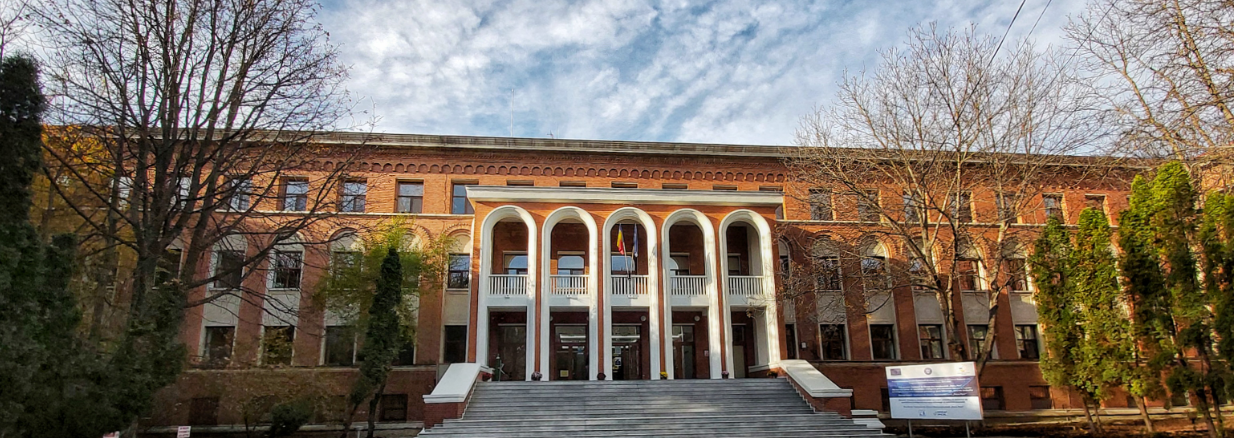|
|
| Novel conceptualization of double-network injectable hydrogels, from naturally occurring polymers |
|
Project status: Ended
|
|
|
The following is a condensed version of the actions that were completed during the stage 1 implementation period:
Stage 1:
- Four types of cellulose were chemically functionalized by means of selective oxidation reactions: microcrystalline cellulose, α-cellulose, cotton linters, and viscose, using the "one-pot" oxidation process, which involves the simultaneous use of N-hydroxyphthalimide (NHPI), sodium hypochlorite (NaOCl), sodium bromide (NaBr), and sodium periodate (NaIO4). The oxidized form of cellulose(Ox-C), will serve as the foundation (the essential component) upon which injectable hydrogels will be built. After going through the oxidation process, we were able to extract tricarboxylated cellulose fractions, which are soluble in water.
- Hydroxypropylcellulose (Ox-HPC) was chemically functionalized by oxidation processes, with sodium hypochlorite serving as the oxidizing agent. Sodium hypochlorite is a common chemical agent that is not only affordable but also safe for the environment. After the oxidation procedure, ketone groups were incorporated into the structure of the hydroxypropylcellulose, and the resulting samples of oxidized hydroxypropylcellulose had varying degrees of substitution.
- Materials that have been chemically functionalized provide a significant number of functional groups (carboxylic, aldehydic, and ketone) that are able to operate as active sites in future transformations.
- The "project execution plan" was successful in every way, as measured by the following indicators: 1 paper that was accepted for publication, participation in scientific meetings (including 2 oral communication and 2 poster presentations), and the establishment of a website for the project.
Stage 2:
- The physicochemical and morphological characterization of oxidized cellulose and oxidized hydroxypropyl cellulose was carried out, demonstrating the successful oxidation of hydroxyl groups in the polysaccharide structure. The structure of the materials was confirmed by FTIR, NMR, X-ray, SEM, XPS, and titration methods. The oxidized materials represent the polysaccharide component of the hydrogel structure.
- The phenomenon of degradation of the cellulose chain during the oxidation reaction has been studied in order to capture the factors contributing to the depolymerization processes.
- Both natural polymers (oxidized polysaccharides) and proteins (gelatin) were successfully methacrylated, as demonstrated by FTIR and NMR techniques.
- Several protocols for the preparation of hydrogels based on methacrylate components were tested, and a suitable protocol for their preparation was established. All the indicators set out in the "project realization plan" were achieved.
Stage 3:
-
New injectable hydrogels have been successfully obtained using methacrylated oxidized polysaccharides (cellulose and hydroxypropyl cellulose) and a methacrylated protein (gelatin). The hydrogels were obtained by UV cross-linking using a biocompatible photoinitiator, riboflavin.
-
The hydrogels were characterized structurally and morphologically using ATR-FTIR and SEM techniques. The swelling behavior of the hydrogels and their mechanical and rheological properties were studied, showing a close interdependence between these properties.
-
The designed hydrogels have both fundamental and applied relevance, with the results having a strong scientific, medical, and socio-economic impact.
-
A remarkable result of this project is the successful design and production of new biomaterials with high application potential through the integration of bioactive and biodegradable natural polymers targeted at medical applications, such as tissue regeneration.
-
The tested formulations exhibited good hemocompatibility and viability (cell viability was close to 100%), meeting material requirements for tissue engineering applications.
-
All indicators of the "Project Achievement Plan" have been achieved: 1 published paper, participation in a scientific event, updating of the project website.
|
|








